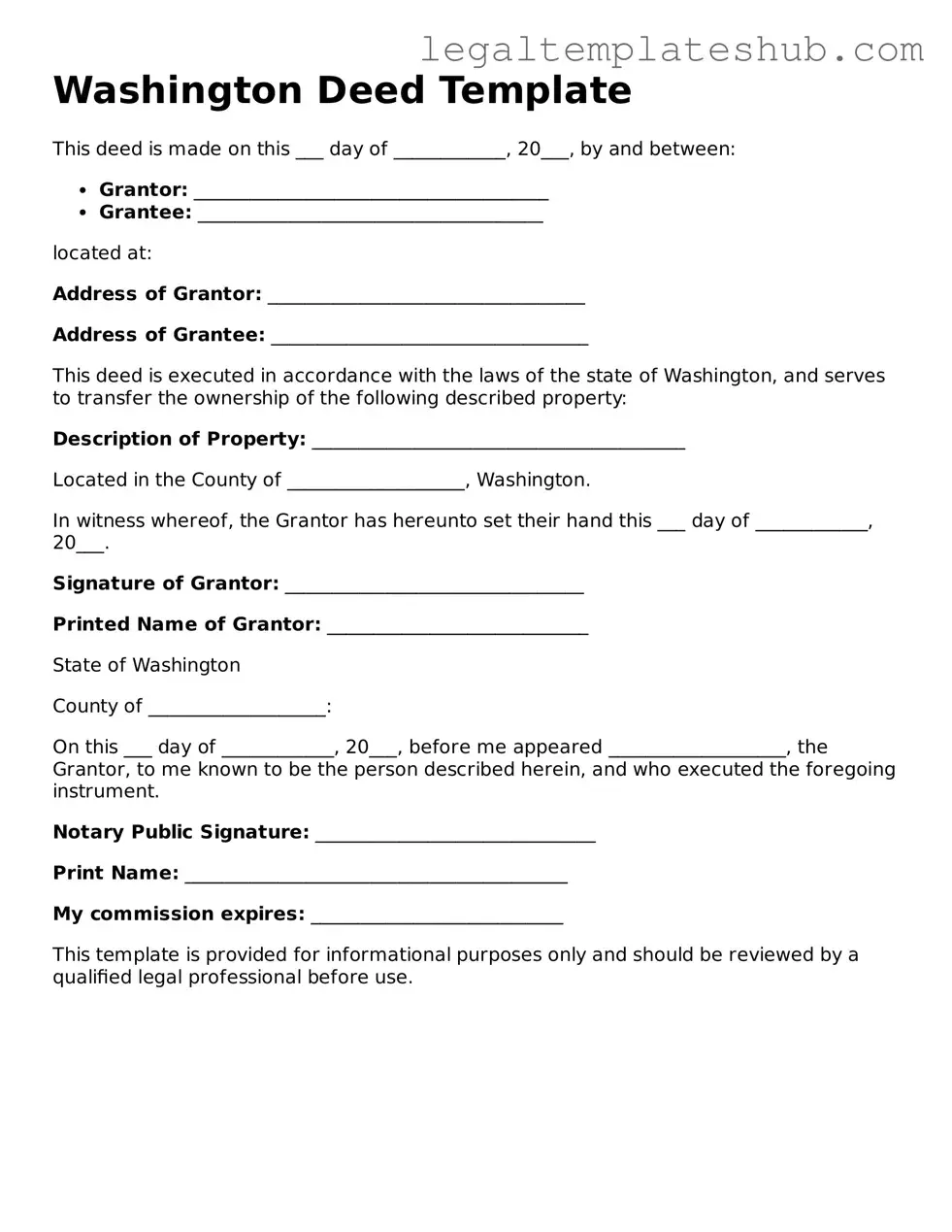Printable Deed Document for Washington
A Washington Deed form is a legal document used to transfer ownership of real property from one party to another within the state of Washington. This form is essential for ensuring that the transfer is recognized by the state and is properly recorded. To begin the process of transferring property ownership, please fill out the form by clicking the button below.
Access Editor
